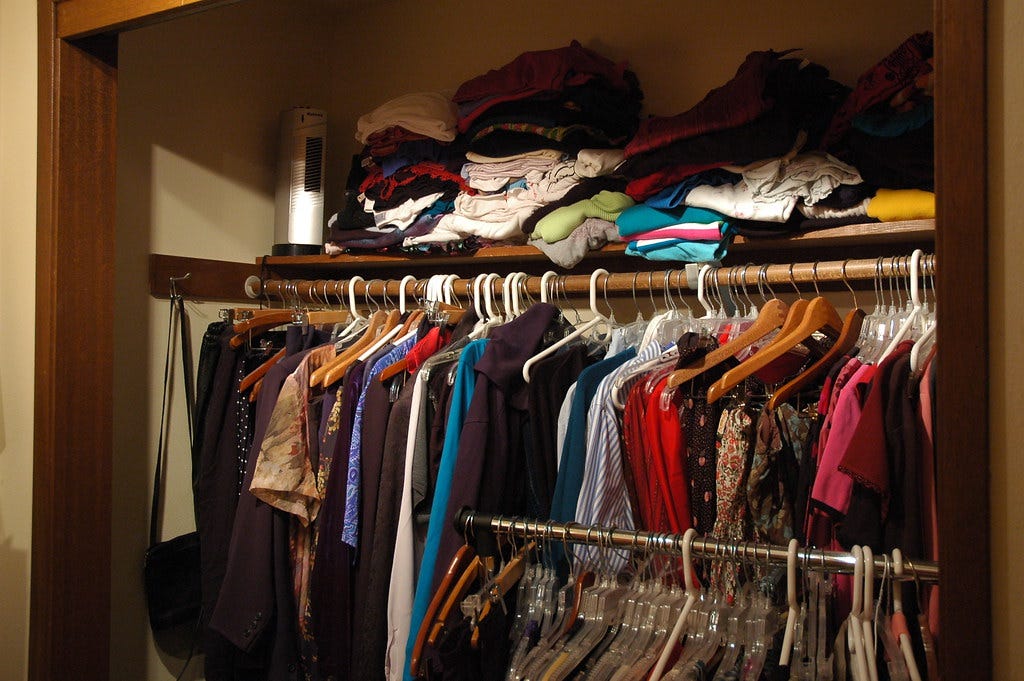This essay originally appeared in the May 2020 issue of FASHION Canada.
Ever since I can remember, I’ve been obsessed with a genre of memoir I like to call “shame, guilt and shopping.” I have an endless appetite for accounts of self-imposed deprivation and boundless addiction, from Judith Levine’s 2006 polemic Not Buying It: My Year Without Shopping to Buzz Bissinger’s harrowing tale of shopaholism “My Gucci Addiction,” published by GQ in 2013. The appeal of these stories rests in their proximity to the extreme. Rubber- necking at accounts of restrictive—or compulsive— behaviour satisfies a deep-seated urge for control. I read them with such unswerving devotion that it almost feels like participating without ever having to deny my own appetite.
Lately, it seems like the number of tales of un-shopping have ballooned to the point where I can barely keep up. As the ills of the fashion industry come clearer into focus (“Between 2000 and 2014, the number of garments produced doubled to 100 billion annually—or, as McKinsey researchers noted, 14 new garments per person per year for every person on the planet,” writes Dana Thomas in Fashionopolis: The Price of Fast Fashion and the Future of Clothes.) It’s apparent that shopping consistently without a second thought to the consequences is no longer an option.
While I have no desire to aid and abet a practice that is destroying the planet, I simply cannot envision a world in which I willingly relinquish the thrill of acquiring some- thing new. To me, fashion represents ideas, and the concept of a static wardrobe signals a form of intellectual stagnancy. Much of my personal identity hinges on the way I dress, and the thought of a wardrobe that refuses to shift and change alongside me chills my blood. So, how can I reconcile the joy I receive from buying and wearing clothing with a desire to respect the earth?
Enter what I call “intuitive shopping.” Born out of the concept of intuitive eating (a.k.a. eating according to the body’s natural cravings), intuitive shopping is rooted in figuring out which consumer habits are the healthiest for you. The term “intuitive eating” was first coined in the 1995 book Intuitive Eating: A Revolutionary Program That Works, and the concept is so simple that it almost sounds like a scam: Eat whatever you want whenever you want, as long as you’re paying attention to your body’s needs. It sounds painfully obvious, but the dismaying reason why such a simple concept needs to be articulated is that many people are so preoccupied with how their body is “supposed” to look that they often aren’t able to recognize what it is they really want.
Intuitive eating has become a subject of renewed interest thanks to a backlash against the wellness culture (a wolf in Lululemon leggings insisting that zucchini noodles and celery juice are the only way to achieve bodily nirvana). Many of the ways of participating in sustainable fashion feel similarly restrictive. Diktats like “Shop only second- hand” and “Don’t buy anything at all” could be effective if adopted en masse but are also tinged with a sense of moral superiority, as if anyone who doesn’t have the willpower to obey them is an outright failure. The rules are strict for a reason, as climate change must be fought directly and urgently. But intuitive shopping presents a more forgiving path that recognizes that what works well for one person may not be as effective for someone else.
Intuitive shopping is about stripping away the layers of conditioning acquired from exposure to marketing and carefully evaluating your own relationship with clothing. For some, it could mean following Judith Levine’s lead and never shopping again. Others may decide to test their limits with temporary shopping bans, such as the one- year fashion boycott called for by climate activist group Extinction Rebellion; to swear off fast fashion but continue to purchase new, ethically made and sustainably produced clothing; or to only buy items in-store to avoid the colossal carbon footprint of e-commerce shipping and returns—Amazon’s carbon footprint alone rivals that of a small nation.
The practice of intuitive shopping involves realistically determining what your own boundaries are and letting them guide any changes you decide to make. For me, it means buying primarily second-hand while affording myself the occasional seasonal splurge from an indie brand like Ovate, Hannah Isolde or Ace & Jig. I feel good about spending money on these labels because the price accurately reflects the cost of producing the garment; plus, it feels responsible to support a small business rather than a massive conglomerate. Small triumphs like these can often get left behind when people adopt monastic life philosophies unconditionally without questioning their efficacy beforehand.
As the seasons turn and the desire to overturn your wardrobe becomes difficult to ignore, it’s time to acknowledge that only you know what’s best for you. Even a zero-waste warrior will admit that it’s virtually impossible to live a sustainable life (there’s always some impact you haven’t yet considered) and small steps toward such a life are better than none.
There’s no need to feel guilty about every purchase; it’s the mindless impulse buys that stem from boredom or frustration that deserve to be pruned away. I may never be able to write a restrictive memoir of my own, but what I experience in my day-to-day life is even better: total satisfaction with everything I buy.






I was so glad to read this! I have a self-imposed no shopping-restriction right now due to a need to budget and curb spending. HOWEVER, I have taken a portion of the funds I used to dedicate to shopping to spend on repairs instead (cobblers, tailors, supplies for making repairs at home, etc). It has fundamentally changed the way I will shop forever, making it easy to intuitively who my closet too!